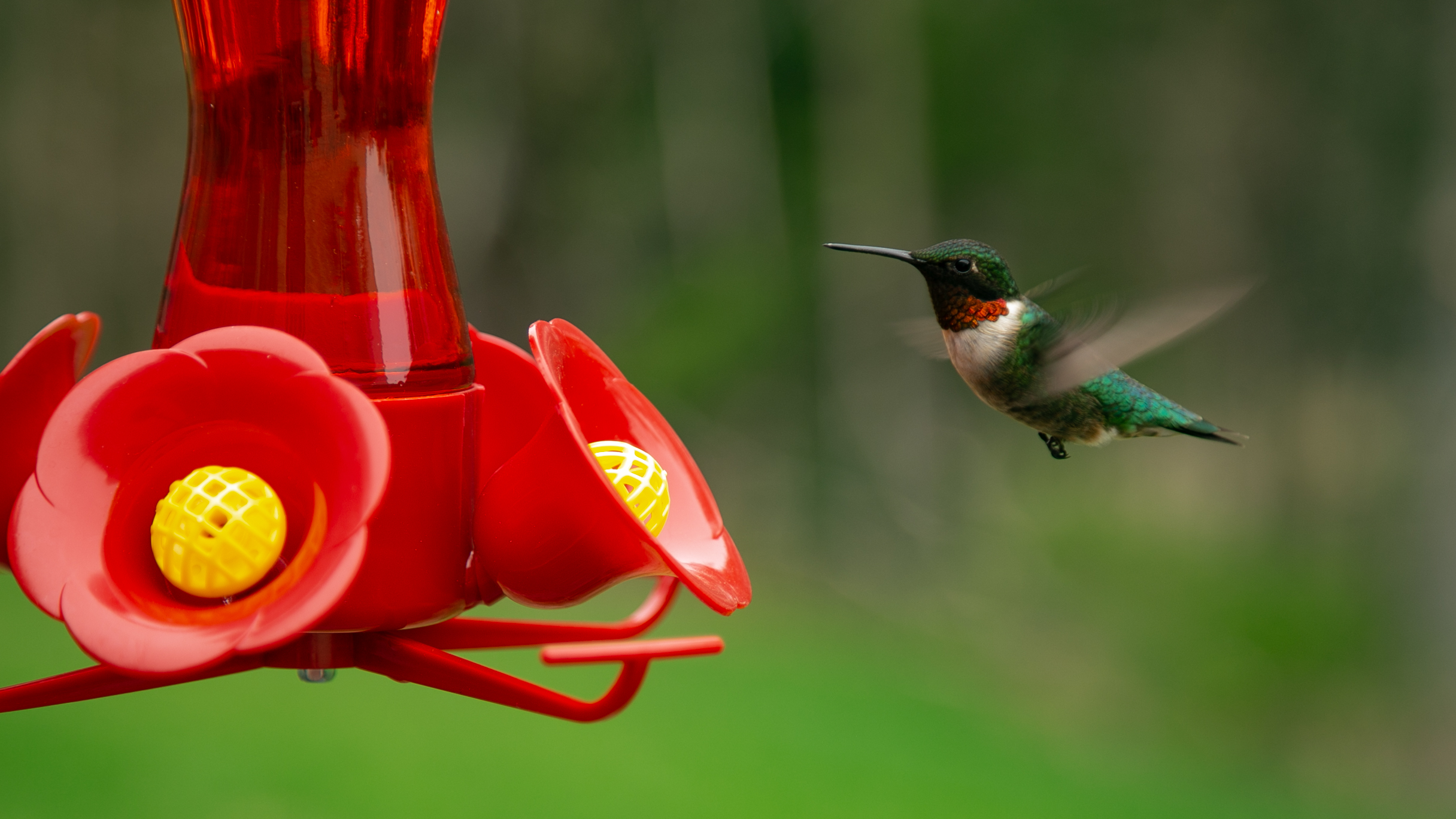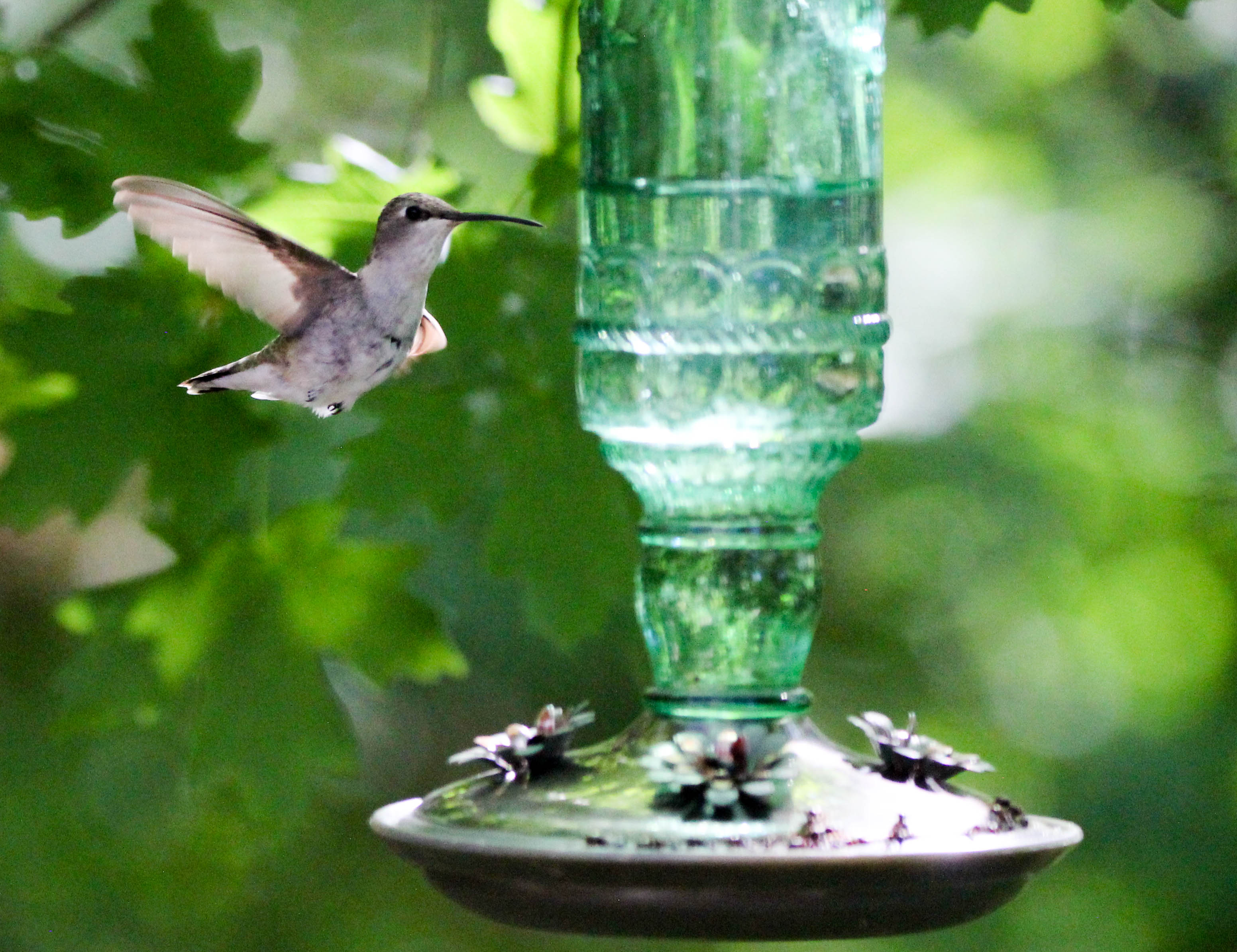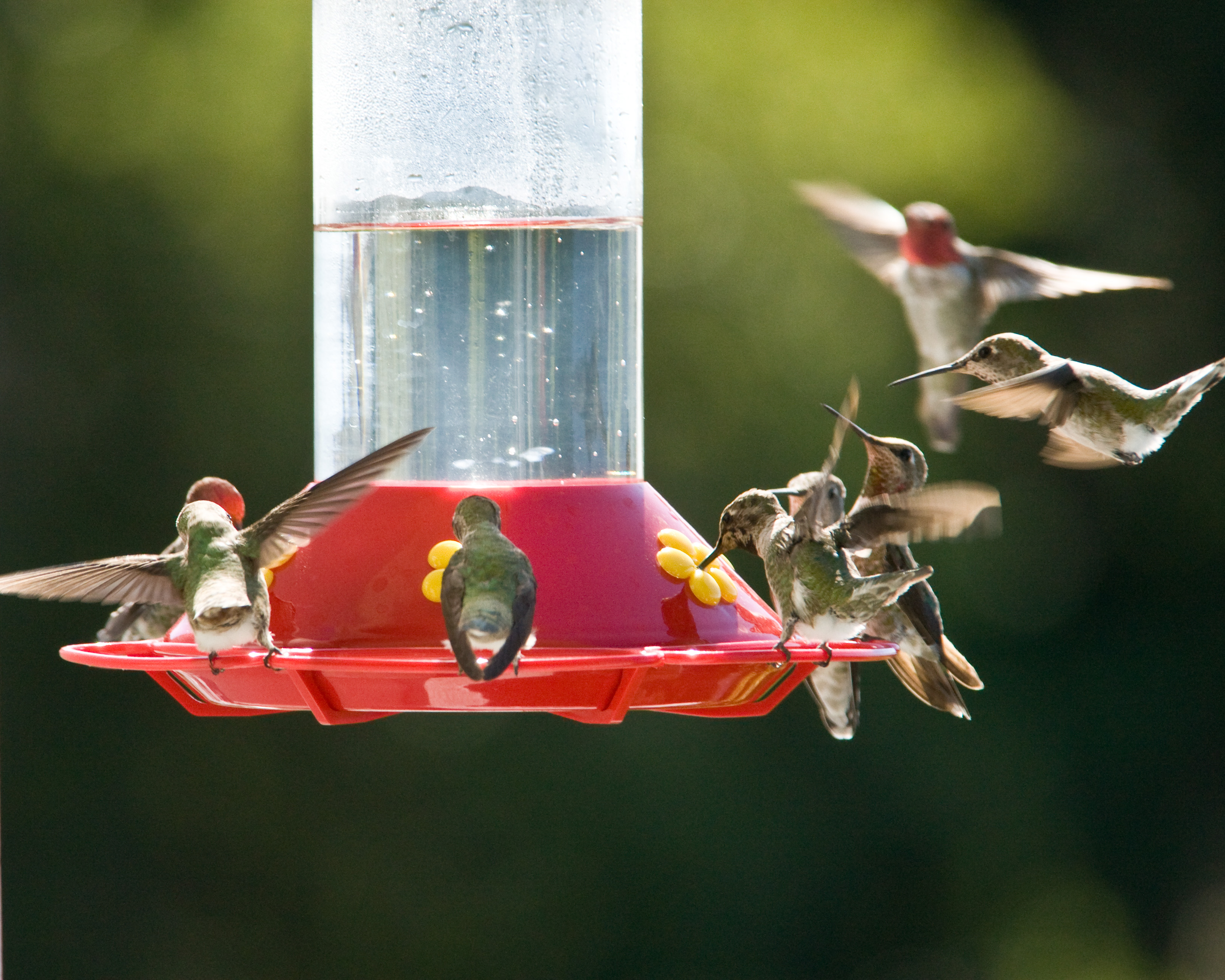How to keep bees away from hummingbird feeders
Learn how to keep bees away from hummingbird feeders and enjoy hummingbird spotting in your backyard

If you're looking for advice on how to keep bees away from hummingbird feeders, you're probably seeing more bees than hummingbirds around your feeder. This is not an unusual problem, since the sugar water used in hummingbird feeders is also highly attractive to bees, wasps, and other insects.
Bees are a key pollinator species and you should never harm them. However, in some contexts, for example, when finding out how to get rid of carpenter bees, you want to discourage them from congregating in your garden too much. We've spoken to two experts highly experienced in deterring bees from hummingbird feeders for their top tips.
Why are bees a problem for hummingbirds?
First of all, what's the problem with bees and hummingbirds sharing? Well, bees frequenting hummingbird feeders (readily available from the likes of Amazon) may introduce impurities to the nectar, and hummingbirds then stop visiting. In some cases, there may be so many bees gathered around the feeder that they simply won't let the hummingbirds use it. So, if you want hummingbirds in your garden, you'll need to actively deter bees from using the feeder.
How to keep bees away from hummingbird feeders

1. Replace your old feeder
Tammy Poppie, from OnTheFeeder.com, describes herself as 'a 20-year veteran of attracting birds to my yard and detracting bees from the hummingbird feeders.' Her main tip is 'to buy a quality feeder. The bees are attracted to nectar but they can't get at it with most modern-day feeders – unless there's been a breach. This means a plastic piece has cracked, ripped, or torn and the sweet nectar is leaking out.
This serves as a magnet for bees near and far.'
She explains that chips and cracks in feeders are more common than you might think: 'Even us veteran backyard birders can fall pretty to a subquality feeder. I
started noticing bees congregating near one of the nectar spouts. Upon closer inspection, I discovered one of the plastic petals was cracked causing the nectar to drip out and attract the bees.'
2. Plant flowers

Sound too simple? The truth is, 'pollinators are naturally drawn to the flowers over the feeder', as landscaping business owner Noah James points out. Flowers are an 'attractive alternative' to hummingbird feeders – that lavender patch right next to your hummingbird feeder will almost certainly be preferred by the bees. Plant several varieties of the best bee-friendly plants in your backyard flowerbeds, and the bees won't give the feeder a second look.
3. Choose a red saucer feeder

Noah confirms that 'bees prefer the color yellow while hummingbirds like red' – a common tip for gardeners who like the look of saucer feeders. The success of this method will depend on how hungry the bees are, but, used in conjunction with other methods, is likely to be effective.
4. Move the feeder
You may have read advice about moving the feeder to a shady spot to solve the problem, but just moving it to a different location may do the trick. Noah explains that 'simply moving the feeder several feet now and again will help lessen visits by bees because they will be disoriented as to where it is. On the other hand, the hummingbirds will not have a problem locating wherever you move it to.'
5. Install a nectar guard
Nectar Guards are designed in a way that 'while the bees cannot get to the nectar, the hummingbirds still can.' You may just find, however, that buying a new feeder is a better solution in the long run.
Anna writes about interior design and gardening. Her work has appeared in Homes & Gardens, Livingetc, and many other publications. She is an experienced outdoor and indoor gardener and has a passion for growing roses and Japanese maples in her outside space.
